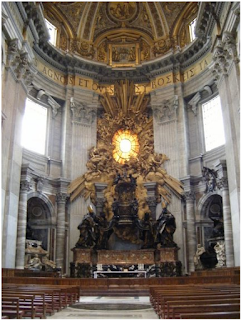However, one area where we had some contention among the group was how well online social networks emulate real life social relationships. Some others in the course felt that relationships forged entirely online could never replicate those made in the real world. Others felt that there was no difference between the two. Since we are all in college, many of our friends from High School live much too far away to stay in touch with in person, and are relegated to the realm of Facebook wall postings, e-mail, and phone calls. Can a social relationship start and thrive merely through these non-real-life mediums?
Major Distraction
To isolate the issue of electronic vs. long distance, let's look an experiment I conducted when I first came to college. Intriguied by the idea that my friends and I were about to disperse from my hometown and meet hundreds of new people, I decided it was a pretty good situation for everyone to make some pen pals. On the premise that it would hinder productivity, I named the experiment "Major Distraction", and created a website where my friends could sign up to get a pen pal. Everyone who signed up (including a few people that had no immediate connection to anyone in the group) was paired with someone else, and both people were told to write letters to each other.It worked great. Everyone wrote to their penpals, and vibrant new relationships were formed - for an average of two letters per pair. Then communication died.
Why did no one stay in touch beyond the initial few letters? I think that the ultimate problem was the activation energy required to communicate. You had to write a letter (slower and more time consuming than a quick IM or wall post), find an envelope and stamp, and get it to the USPS. That meant a non-trivial time investment that most people just didn't want to make as they were starting college. Taking the time to explain to someone we didn't know how our lives were going on paper was just too much effort. Is a high-effort friendship with a stranger not worth it?
Natural Selection
To constrast this "I'm not willing to put time in" situation, let's look at another experience I have had. While I was in high school, I played Natural Selection, a first-person-shooter meets real-time-strategy online multiplayer Half Life modification. In online gaming, it is common for players to organize themselves into team groups called "clans". Clans play against each other in organized matches as part of online leagues. I was a member of a clan called BS, which didn't really stand for anything, but occassionally stood for "Brotherhood of Steel".We had a rather sophiscated organizational system. We all hunt out in an IRC channel (#nsclanbs on gamesnet, I think), scrimmaging against other teams during our free time. For a little while, we even had access to our own practice server, where we could play against each other to improve our skill and refine our strategies. We weren't the best players at the game by any stretch of the imagination, but our creativity in strategy is what stood us apart. We were ranked in the Top 8 among NS clans for a little while, and were able to hold our own.
Since we chatted online so much and played intense games together, we all become what one member of the group called "e-friends". Since voice chat was a big part of the game, I grew to recognize everyone's voice, and understood each member of the clans specific play styles, strengths and weaknesses. The guys from the clan I remember are: bit, un lapin, amelek, the giving tree, the killing tree, riotingnerd, ev0x, and deimos. There were definitely more, and people wandered in and out of the group over time, but we were definitely a cohesive entity. I've met ev0x in real life, and am Facebook friends with a few others.
Are these people that I still have close friendships with? Not really, but I definitely look back on my days playing NS with them fondly. We still talk occassionaly, and I would say I am as close with these people as anyone else that I stopped being friends with during early high school. Just because I met them and knew them online doesn't mean that my relationships with them are any less real than anyone else I have ever met.
























